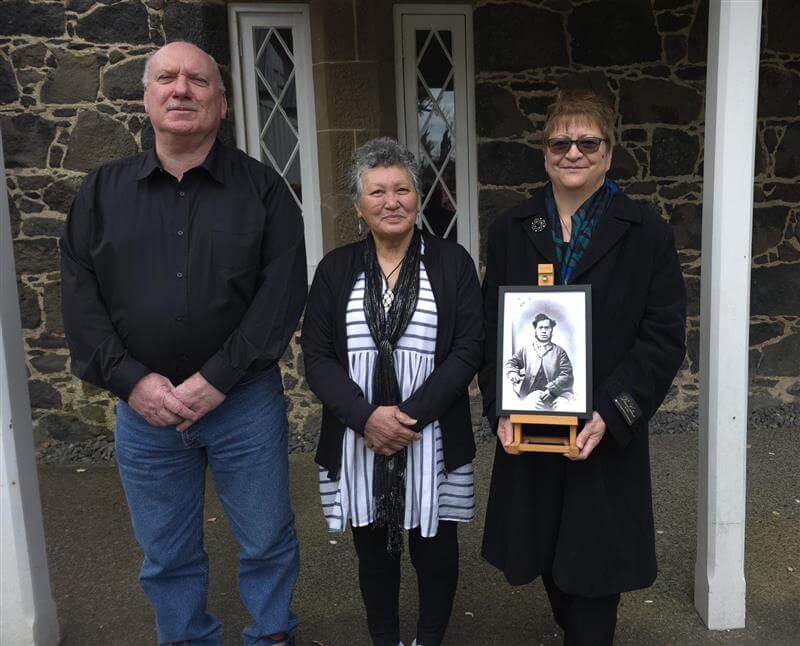Descendants of Rota Waitoa, the first ordained Māori Minister in Aotearoa, are on a journey to ensure that his remarkable life and teachings are remembered for future generations.
Rota, affectionately referred to as Te Mātāmua o ngā Minita Māori, acknowledging his position as the first Māori to be ordained as an Anglican clergyman in Aotearoa, was a trusted companion of Bishop Selwyn and a graduate of St John’s College. He served faithfully at Te Kawakawa, now Te Araroa, where his ministry bridged deep cultural divides and earned respect from clergy, chiefs, and colonial leaders alike.
Rawinia Gibbons, Rota’s great-great-granddaughter, and her husband Nigel have undertaken a few mini-pilgrimages retracing his footsteps across the country.
That journey recently saw them return to St John’s Theological College where Rota played a pivotal role and trained for ministry. Rawinia is passionate about maintaining their ancestral connections.
“It’s about our connection to the whenua, to our people, to our communities, from way back to the future,” she explains. “This is my indigenous right. This is my heritage, and I need to carry this with pride.”
From St. Stephen’s College (Tipene) to Te Waimate, from Kaitaia to Howick, they have meticulously documented and researched the life of a man who played a crucial role in bridging Māori culture and Christian faith.
On this journey, the couple were joined by a whanaunga of Rawinia, who happens to also be a descendant of Iharaia Te Houkāmou, a chief of Ngāti Porou who had a complex relationship with Rota.
At first, Te Houkāmou showed resistance towards Rota and the Christian faith, but eventually, accepted the ‘outsider’, offered himself for baptism and became a close friend and supporter of Rota.
“There was a time when Te Houkāmou would have seen there were some outstanding achievements by Rota. Rota was a humble man, from what we understand, and Te Houkāmou would have observed that behaviour and what he did in the community, and that was when he had earned his right through Te Houkāmou’s, eyes,” Rawinia explains.
“He could not have accepted Rota any other way. It was purely from the mahi that he did, that he continued to just get on with helping this community.”
Their mission involves extensive research, collecting oral histories, and connecting with communities where Rota once preached. Everywhere they have travelled, and in every interaction, they have found a new anecdote or story of connection to their tipuna.
“Someone has to do this mahi to ensure that his legacy is kept alive,” Rawinia says.
The ultimate goal is to collate as much information as possible of Rota Waitoa’s life and build a website for whānau to share, learn and be immersed in their ancestor’s legacy, and the significant role he played in developing the spiritual and cultural landscape of Aotearoa.
The journey hasn’t been without challenges and resistance from groups reluctant to share history with “outsiders”.
However, as Rota himself did, they haven’t shied away, and instead view those challenges as opportunities to educate, enlighten, and spread the story of Rota Waitoa to a wider audience.
Nigel is convinced that Rota’s influence continues beyond his physical lifetime. “I believe that Rota is still alive in the spiritual sense,” he says. “He must still be leading us with what he does.”
Rawinia feels immense pride whenever she hears today’s Māori ministers acknowledge Rota as the foundational figure in the Māori church, recognising his strategic teachings and his role in preserving Māori culture during a challenging period of colonisation.
Rawinia sees the current students at St. John’s College as the torchbearers of this legacy.
“The tamariki that are going through the kura here at St. John’s are going out there, and they’re going to preach,” she says with pride. “They will continue the work started by our tupuna.”
As they continue their hīkoi, Rawinia, Nigel, and their whānau are not just preserving history – they are keeping a spiritual flame alive, honouring the memory of a man who bridged cultures and inspired generations.
“We’re only just touching the surface,” Rawinia says, her eyes bright with determination. “But we will continue to research, to share, and to ensure that Rota’s legacy lives on.”
